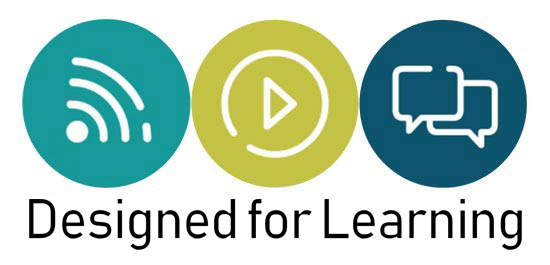
20 Mar What is e-learning?
There are many definitions of e-learning. Some limit its scope while others broaden it depending upon the needs of the definer. Its definition in education is quite different to its definition in the commercial world.
In the commercial (non-education) world there is increasing pressure from clients to develop e-learning that is shorter and which can be delivered in bite sized chunks (often called ‘microlearning’). This pressure is forcing many to redefine the very nature of e-learning and this is causing confusion amongst many who are new to it all. I’ve always preferred a broad definition and one that encompasses a wide range of web based learning technologies and approaches.
“E-learning is a broadly inclusive term that describes educational technology that electronically or technologically supports learning and teaching.” Wikipedia
For me online learning and e-learning are synonymous but this isn’t the way e-learning is understood by many in the commercial world where efficiency and cost reduction is the key driver for its popularity. So in an attempt to clarify what most people mean when they talk about e-learning (what I often call conventional e-learning) here is my updated definition:
“E-learning is a packaged digital resource that helps someone learn something. E-learning resources are normally called ‘modules’. A course may be a single module or a collection of modules which must be completed in a set order. E-learning is different to other learning resources in that it requires learner interaction. Learners must respond to questions, engage in activities and make decisions. Based on their choices they receive feedback and may be directed to different material. In this way the resource is adaptive and may be experienced differently by different learners. In e-learning the leaner is active not passive. Most e-learning modules will be produced as a SCORM package and delivered via a learning management system (LMS).”
Of course not all e-learning modules will meet these criteria – much of the early stuff belonged to the ‘page turning’ genre but most professional e-learning developers today will rarely build page-turners for their clients. E-learning authoring tools such as Articulate Storyline or Adobe Captivate are designed to develop these conventional SCORM packaged modules – ideally packed full of exciting learning interactions and activities.
So applying this definition – a video (even a very cool explainer video), a beautifully designed PDF or infographic does not constitute e-learning even though they may be delivered digitally though a ‘learning platform’.
The problem with conventional e-learning is that it lacks flexibility and is tied to the old teaching paradigm – it’s usually linear and needs to be completed from start to finish to work effectively. Although some e-learning modules offer a more flexible way to navigate through the material most clients and LMS prefer the ‘tell them then test at the end’ structure.
The technologies on which most e-learning modules are built (HTML and Javascript) are also less flexible that other web based formats such as video or PDF files. In particular the growth of mobile devices in their various form factors and operating systems has really challenged the role of conventional e-learning and many new online learning platforms (e.g. Udemy or Teachable) have sidestepped SCORM altogether in favour of video and other mobile friendly content standards. The so-called successor to SCORM, Tin Can recognises this new online learning landscape and substantially broadens what constitutes learning on the web. Reading a blog, commenting in a forum, or watching a video are all learning activities in the world of Tin Can. They are all potential learning experiences which is why Tin Can has been re-badged as the Experience API or xAPI.
So, does the conventional e-learning module have a future? In the short term the answer has to be a resounding yes. And this is clear from the raft of new authoring tools which are making it easier to develop conventional e-learning modules, whether they are the click next, screen by screen type (Articulate Storyline) or the scroll down responsive mobile type (Articulate Rise).





Kostenlos anmelden
Posted at 17:00h, 16 FebruaryYour point of view caught my eye and was very interesting. Thanks. I have a question for you. https://accounts.binance.com/de-CH/register?ref=IQY5TET4
bahis porno
Posted at 07:40h, 21 Februaryporn siteleri pokkerx.qGvG7wxAaohi
childrens sex
Posted at 07:53h, 21 Februarycraft porn footballxx.BMAyNXVG2bZ9
porno
Posted at 07:57h, 21 Februarybahis porno mobileidn.sTNacFwrN5Vo
porn
Posted at 08:02h, 21 Februaryamciik siteleri bingoxx.nd5usda4hXCB
childrens sex
Posted at 08:37h, 21 Februarypornhub bahis siteleri 250tldenemebonusuxx.NVIOvDpLX8G3
anal sikis siteleri
Posted at 10:45h, 21 Februaryporn sex eyeconartxx.NqzOClhZFM7G
porn siteleri
Posted at 17:01h, 22 Februarysexax vvsetohimalxxvc.mFXaYuFLhV1b
childrens sex
Posted at 20:57h, 23 Februarybahis porno tthighereduhryyy.SrhQFPmu27o
Matt Sullivan
Posted at 19:37h, 12 MarchHi, Neat post. There is a problem along with your website in internet explorer, would test this텶E still is the market chief and a good section of other folks will pass over your magnificent writing due to this problem.
porn videos 4k download
Posted at 15:47h, 13 Marchfree hd porn video download ggjinnysflogg.UUvA8qpfI5x
Matt Adams
Posted at 02:50h, 21 MarchI appreciate how you’ve made such a complex topic accessible to everyone.
fashionflag pornfullhd
Posted at 08:25h, 27 Marchfashionflag free hd prons fashionflag.WssXuCJdLpf
goodhere Celebrity porn
Posted at 04:22h, 28 Marchgoodhere Funny Porn vurucutewet.qDllQIUY6SS
ladyandtherose Creampie porn
Posted at 07:47h, 28 Marchladyandtherose Cartoons porn backlinkseox.M5TI8SswWoR
jenniferroy 老若男女のポルノ
Posted at 14:22h, 28 Marchjenniferroy 女の子の自慰行為ポルノ japanesexxporns.hpNwBq0n3Ot
landuse Lesbians porn
Posted at 07:06h, 29 Marchlanduse Fetish porn lancdcuse.dYmi1fM2pPn
falbobrospizzamadison Big Ass porn
Posted at 14:07h, 29 Marchfalbobrospizzamadison Black and White porn jkkıjxxx.ner16NXdmb3
शौकिया अश्लील
Posted at 07:02h, 30 Marchलैटिन अश्लील qqyyooppxx.StYun06hhxc
व्यभिचारी पोर्न के बा
Posted at 15:07h, 30 Marchआबनूस अश्लीलता के बा hjkvbasdfzxzz.mD4dR5tlNmE
श्वेत-श्याम अश्लीलता
Posted at 11:26h, 01 Aprilबीबीडब्ल्यू अश्लील txechdyzxca.LTwgNDG1n1c
sandyterrace.com
Posted at 10:35h, 02 Aprilgame1kb.com
Zhu Houzhao는 감히 일어나지 않았고 Zhu Xiurong은 손수건으로 눈물을 닦았습니다.Zhu Houzhao는 Fang Jifan에게 게을러질 기회를 주지 않았습니다.
에그벳슬롯
Posted at 12:20h, 02 Aprilsandyterrace.com
“무슨 말이야?” 홍지황제가 그를 의심스럽게 바라보았다.”무슨 말이야?” 홍지황제가 장황후를 바라보았다.
बड़ा लंड अश्लील
Posted at 18:49h, 02 Aprilकार्टून अश्लीलता hkyonet.ZjGhYtpUQS4
qiyezp.com
Posted at 04:52h, 03 Aprilqiyezp.com
그는 Fang Jifan을 산산조각 낼 수 있기를 바라며 이를 악물었습니다.
ਗਰਭਵਤੀ ਪੋਰਨ
Posted at 16:26h, 03 Aprilswinger ਪੋਰਨ ਹੈ madisonivysex.PxbhqGnRA8H
ladesbet ਕਮ ਸ਼ਾਟ ਪੋਰਨ
Posted at 05:54h, 05 Aprilladesbet ਈਬੋਨੀ ਪੋਰਨ ladesinemi.MarGVa0MHPf
ladesbet 集団セックス
Posted at 07:34h, 05 Aprilladesbet ラティーナポルノ ladestinemi.5IarISByDYW
Maybell Howe
Posted at 22:40h, 08 AprilYour dedication to your craft is inspiring.
azithromycin 500mg australia
Posted at 20:03h, 17 Aprilwhere can i buy azithromycin pills
valtrex tablets uk
Posted at 07:44h, 19 Aprilbuy valtrex online prescription
happy family drugstore
Posted at 15:04h, 19 Aprilcanadian happy family store